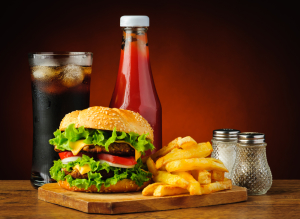 “You mean the food in the package looks nothing like the food on the label,” said no one, ever. Seriously though, it comes as no surprise to anyone past elementary school age that the pictures of food we see on most packages, websites, and TV commercials has been made up with as much care as a model getting ready for a photo shoot. However, the lengths to which professional food photographers (and other specialists called “food stylists”) go to in order to capture food in its most perfect (if not altogether natural) form. Today, Dallas food and lifestyle photographer Doug Davis shares three secrets of food photography that just might shock you.
“You mean the food in the package looks nothing like the food on the label,” said no one, ever. Seriously though, it comes as no surprise to anyone past elementary school age that the pictures of food we see on most packages, websites, and TV commercials has been made up with as much care as a model getting ready for a photo shoot. However, the lengths to which professional food photographers (and other specialists called “food stylists”) go to in order to capture food in its most perfect (if not altogether natural) form. Today, Dallas food and lifestyle photographer Doug Davis shares three secrets of food photography that just might shock you.
1. I Need a Hero!
Have you ever wondered where they got that hamburger bun with the perfectly spaced sesame seeds or that bowl of cereal where none of the pieces are stuck together or have a weird shape or clearly spent a minute too long in the oven? The answer is that once upon a time, a food stylist or photographer painstakingly went through hundreds of buns or a case full of cereal boxes to find the best looking ones for the photo shoot. These perfect specimens are referred to in the industry as “hero foods.”
2. It’s All About Support
The perfect stack of pancakes in the breakfast menu. The perfectly executed sandwich piled high with meat, cheese, and veggies. The divine-looking pile of perfect crepes in the pages of your food magazine. Do food photographers live a world without gravity, or at least without pancakes that sink in the middle or sandwiches that topple over? No, they actually just use supports, such as bamboo chopsticks or pieces of thin cardboard to lend stacked foods some interior support.
3. Preserving Perfection
Unless you’re shooting in a restaurant setting or in a kitchen-studio, taking the perfect photograph of certain foods is a fight against the clock. Or, at least, it would be if experienced food stylists and photographers didn’t use different tricks to keep food looking better longer. For instance, fruits like peaches, strawberries, and apples will brown almost immediately upon cutting, so many stylists spritz cut fruit down with lemon juice or a mixture of vinegar and water to slow the oxidation (browning) process.
About Doug Davis and D-Squared Studios
Doug Davis has been producing professional, engaging videos and product, food, and lifestyle photography from his Dallas studio for over 20 years. We’d love to discuss how video can play a vital role in your dynamic marketing strategy. D-Squared Studios is located at 4312 Elm Street, Dallas, Texas 75226. Contact our office at (214)746-6336 or doug.davis@d2studios.net to schedule a consultation.
